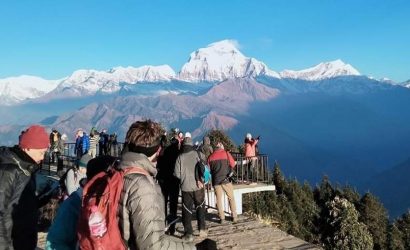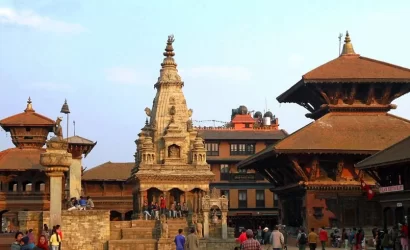Kanchenjunga, one of the world’s most spectacular Kanchenjunga, the third highest peak on the planet, can I mountains is renowned as the queen of mountains. show off varied ecological zones, from the subtropical land to hostile wilderness. The Kanchenjunga Trekking regions are one of the unspoiled trekking trails, located in the eastern part of Nepal.
Minimum two people required to book this trip.
Overview
The Kanchenjunga Trek is a singular and immersive expedition that explores the lonely, unexplored regions of the Himalayas. It takes place at an altitude of 8,586 metres (28,169 feet), at the foothills of the third-tallest peak in the world. This breathtaking adventure follows the untraversed, natural paths through untamed wilderness, verdant woods, towering mountain rivers, high-altitude Himalayan kharkas, and glacial moraines, in contrast to other popular trekking expeditions.
This magnificent journey not only allows you to discover the Himalayan wildlife and flora that are protected by the Kanchenjunga Conservation Area, but it also provides you with unmatched views of the magnificent Himalayan jewels, including Kanchenjunga, Mera Peak, Twin Peak, Khumbhakarna Peak, Khabur, Makalu, Rathong, and Kabru Dome.
Itinerary
Includes
- Airport pickup and drop by private vehicle.
- Three nights Kathmandu hotel in a 3-star hotel including Breakfast.
- Trekking lodge (Tea House) and home stay accommodations during the trek.
- Three meals a day (breakfast, Lunch and dinner) during the trek including a cup of hot drink(Tea/ Coffee) each meal.
- Special Trekking permits, Conservation permits and other required paper documents.
- Shared Jeep transport Birtomood -Taplejung and Yamphudin-Ilam -Birtamood.
- Round trip flight fare Kathmandu-Bhadrapur-Kathmandu) with airport tax and pickup and drop.
- A highly experience, helpful, knowledgeable, friendly, English speaking well trained, Government license holder guide with all his salary, food, drinks, accommodation, transport and insurance.
- Strong, helpful porters with proper equipment.
- Medical supplies (first aid kit will be available).
- Arrangement of Emergency Helicopter service which will be paid by your Travel Insurance Company.
- Free rental of Seeping bags
- Guided city tour as per above itinerary with private vehicle.
- Government taxes and official expenses.
- Oxymeter to check your pulse and oxygen saturation and heart rate twice daily (Very useful to check Altitude Mountain Sickness(AMS) symptoms) Which will ensure you trek is in the safest hands possible for all levels of trekker.
Excludes
- Meals whilst you are in Kathmandu
- Nepal entry visa fee
- Your Travel Mountain Rescue Insurance
- International airfare.
- Your personal expenses.
- Soft drinks, bottle of water, any alcoholic drinks, extra tea/coffee.
- Desserts and snacks between the meals.
- Hot shower, battery charging and use of WIFI on the tea houses.
- Tips for guides, porter and driver (tipping is expected).
- Kathmandu sightseeing tour entrance fee
- Satellite phone








